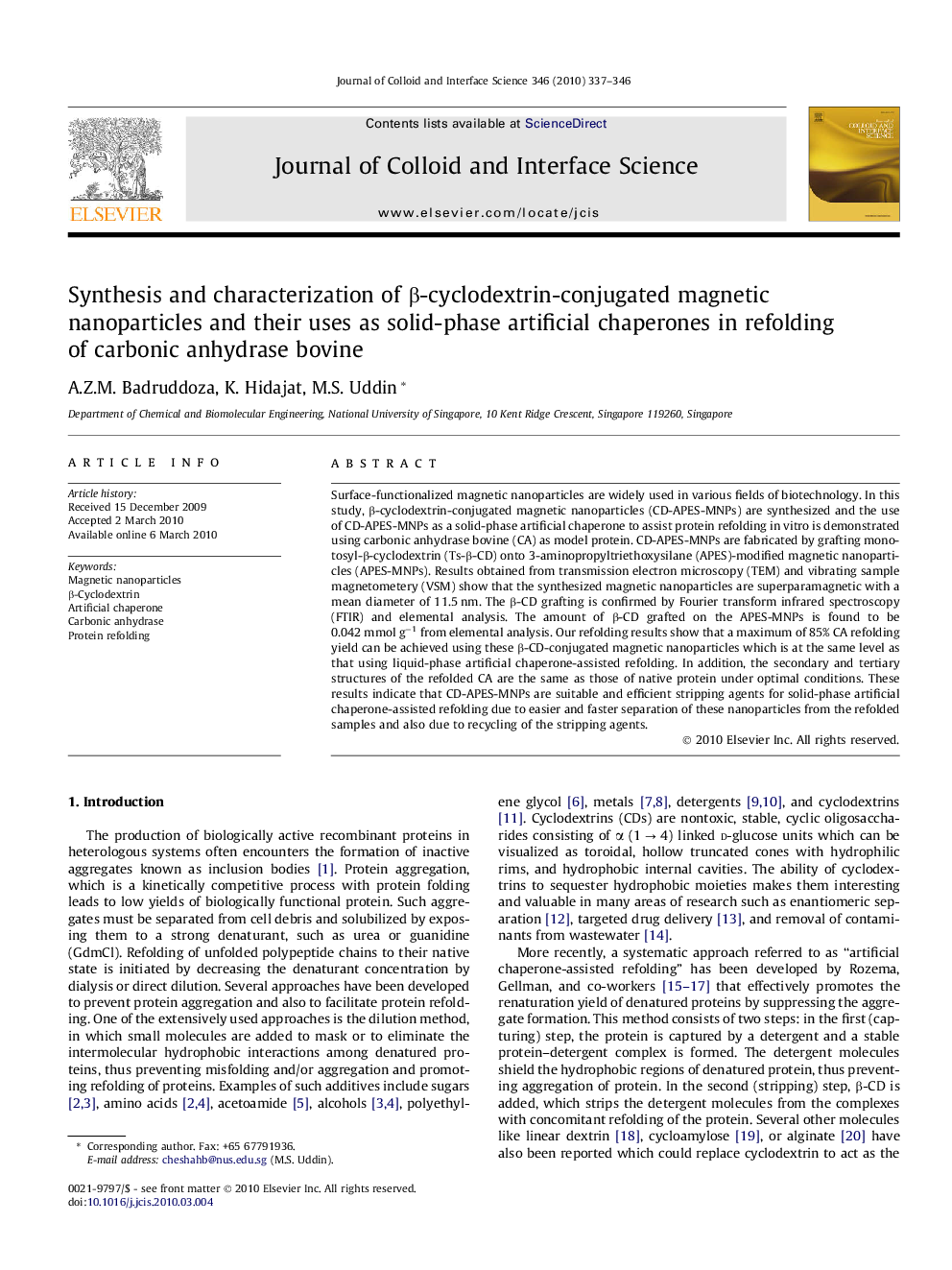| Article ID | Journal | Published Year | Pages | File Type |
|---|---|---|---|---|
| 609771 | Journal of Colloid and Interface Science | 2010 | 10 Pages |
Surface-functionalized magnetic nanoparticles are widely used in various fields of biotechnology. In this study, β-cyclodextrin-conjugated magnetic nanoparticles (CD-APES-MNPs) are synthesized and the use of CD-APES-MNPs as a solid-phase artificial chaperone to assist protein refolding in vitro is demonstrated using carbonic anhydrase bovine (CA) as model protein. CD-APES-MNPs are fabricated by grafting mono-tosyl-β-cyclodextrin (Ts-β-CD) onto 3-aminopropyltriethoxysilane (APES)-modified magnetic nanoparticles (APES-MNPs). Results obtained from transmission electron microscopy (TEM) and vibrating sample magnetometery (VSM) show that the synthesized magnetic nanoparticles are superparamagnetic with a mean diameter of 11.5 nm. The β-CD grafting is confirmed by Fourier transform infrared spectroscopy (FTIR) and elemental analysis. The amount of β-CD grafted on the APES-MNPs is found to be 0.042 mmol g−1 from elemental analysis. Our refolding results show that a maximum of 85% CA refolding yield can be achieved using these β-CD-conjugated magnetic nanoparticles which is at the same level as that using liquid-phase artificial chaperone-assisted refolding. In addition, the secondary and tertiary structures of the refolded CA are the same as those of native protein under optimal conditions. These results indicate that CD-APES-MNPs are suitable and efficient stripping agents for solid-phase artificial chaperone-assisted refolding due to easier and faster separation of these nanoparticles from the refolded samples and also due to recycling of the stripping agents.
Graphical abstractSchematic diagram of cyclodextrin-coated magnetic nanoparticle-assisted in vitro protein refolding.Figure optionsDownload full-size imageDownload high-quality image (128 K)Download as PowerPoint slide
